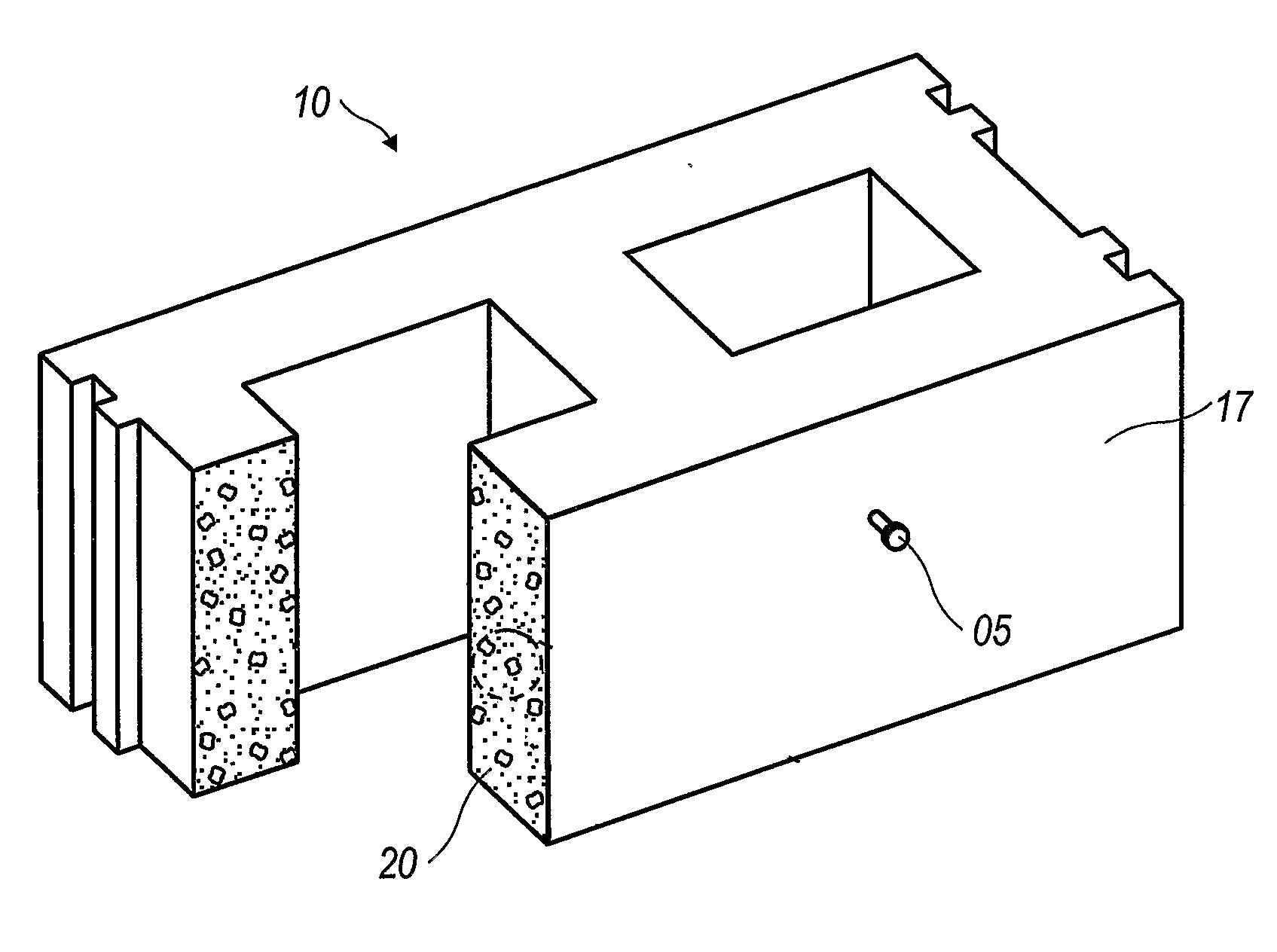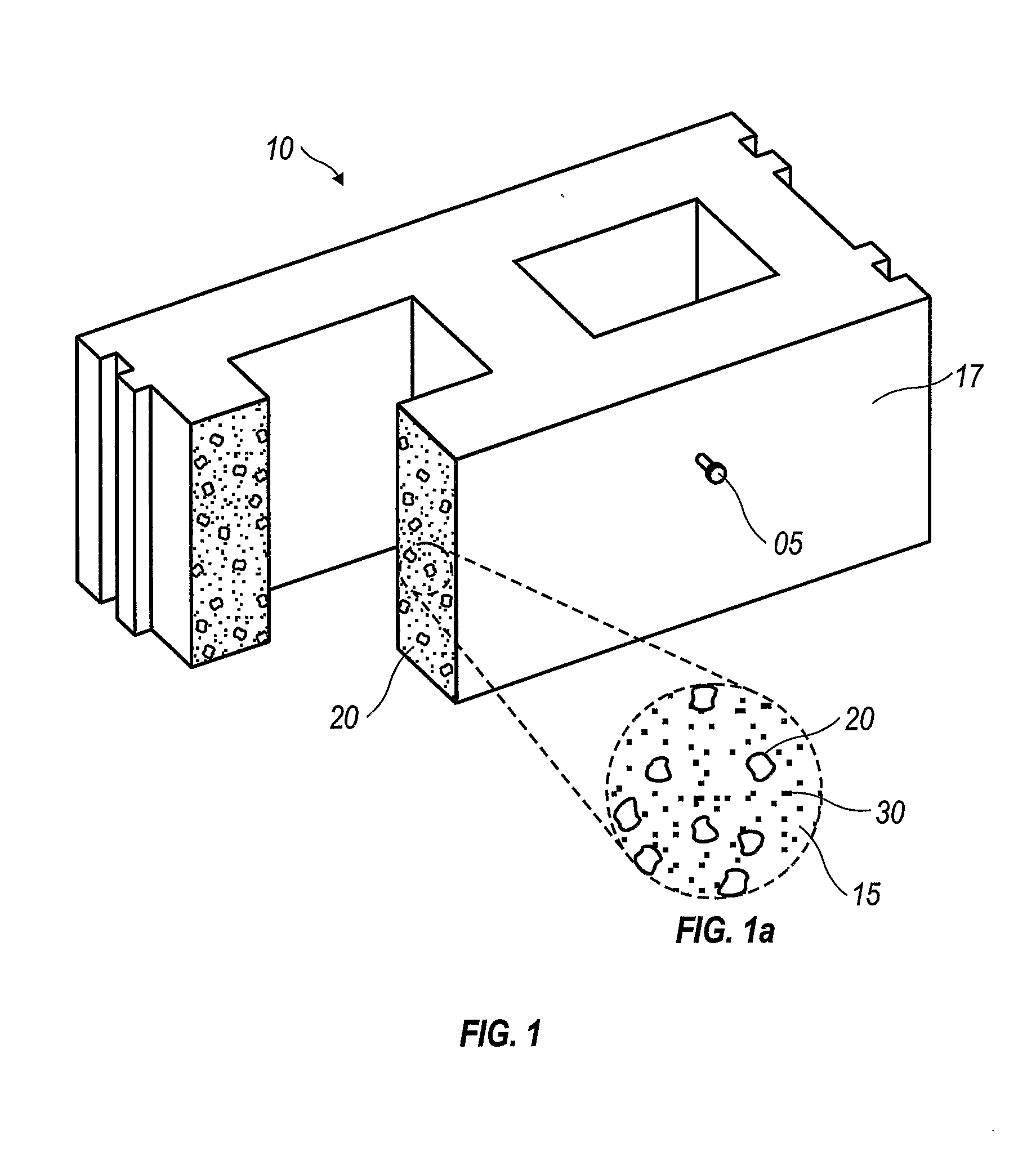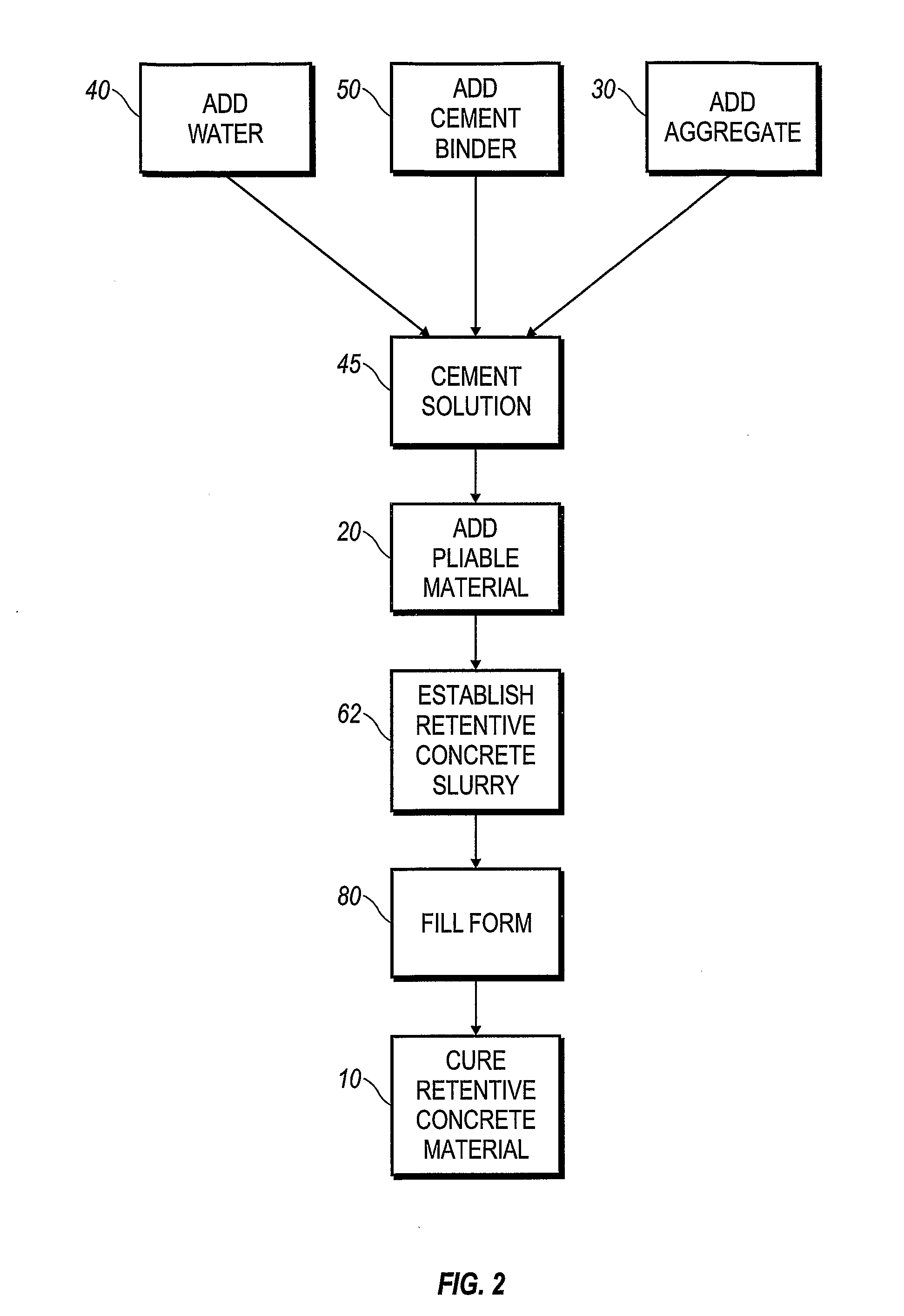Retentive concrete material
a concrete and reinforcement technology, applied in the field of reinforcement concrete, can solve the problems of structural degradation of the structure or component, prone to breakage of the thermo-insulating cladding of the concrete, and the creation of attachment regions after-the-fact requires expensive workarounds or inferior/substandard attachment alternatives, and achieves superior performance and superior performan
- Summary
- Abstract
- Description
- Claims
- Application Information
AI Technical Summary
Benefits of technology
Problems solved by technology
Method used
Image
Examples
Embodiment Construction
[0021]As required, detailed embodiments of the present invention are disclosed herein; however, it is to be understood that the disclosed embodiments are merely exemplary of the invention that may be embodied in various and alternative forms. The figures, if any, are not necessarily to scale, some features may be exaggerated to show details of particular components. Therefore, specific structural and functional details disclosed herein are not to be interpreted as limiting, but merely as a basis for the claims and as a representative basis for teaching one skilled in the art to variously employ the present invention.
[0022]Furthermore, elements may be recited as being “coupled”; this terminology's use anticipates elements being connected together in such a way that there may be other components interstitially located between the specified elements, and that the elements may be connected in fixed or movable relation one to the other.
[0023]The present invention comprises a retentive co...
PUM
| Property | Measurement | Unit |
|---|---|---|
| non-metallic | aaaaa | aaaaa |
| structure | aaaaa | aaaaa |
| dimensions | aaaaa | aaaaa |
Abstract
Description
Claims
Application Information
 Login to View More
Login to View More - R&D
- Intellectual Property
- Life Sciences
- Materials
- Tech Scout
- Unparalleled Data Quality
- Higher Quality Content
- 60% Fewer Hallucinations
Browse by: Latest US Patents, China's latest patents, Technical Efficacy Thesaurus, Application Domain, Technology Topic, Popular Technical Reports.
© 2025 PatSnap. All rights reserved.Legal|Privacy policy|Modern Slavery Act Transparency Statement|Sitemap|About US| Contact US: help@patsnap.com



